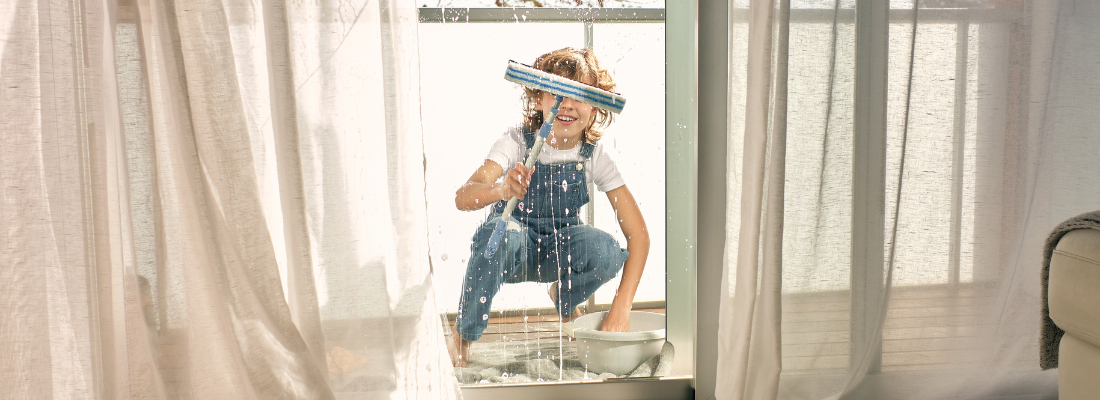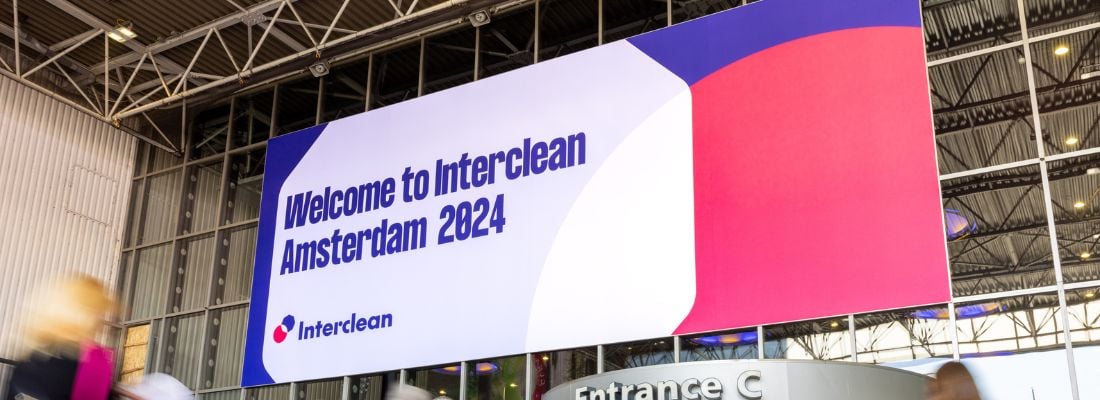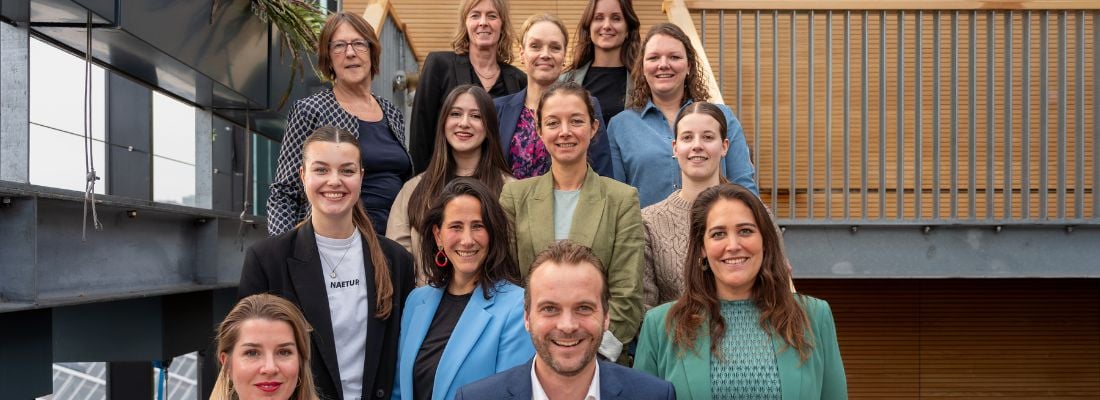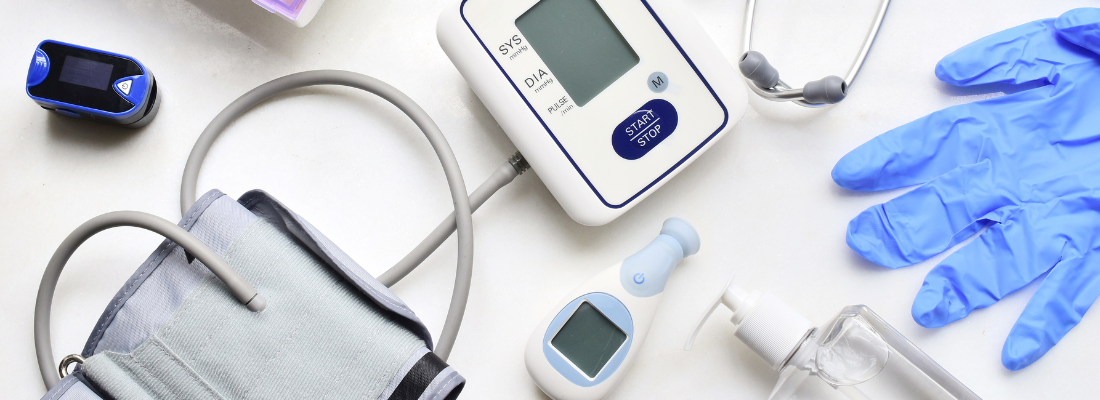Regional Spotlight: Latest US Healthcare Cleaning Trends
Welcome to our monthly series, Regional Spotlight – a collaborative project with partners from around the world, where we explore exciting innovations in cleaning and hygiene across various regions. As a global platform for sharing knowledge, trends and insights, Interclean is proud to always bring you the very latest news and developments from the international cleaning industry.
This series aims to shine the spotlight on some of the most exciting advances across different sectors and topics – ranging from automation and robotics, to sustainability, legislation, food safety and sanitation in markets and countries from all four corners of the globe. Each month we’ll delve into the issues making waves and shaping the industry with a series of questions and answers with one of our partners – helping you to stay ahead of the cleaning curve!
The latest healthcare cleaning developments in the USA
In this month’s edition, we focus on the latest innovations in cleaning and hygiene within North American healthcare settings. With an increasing emphasis on infection control and patient safety, these advancements play a crucial role in enhancing the quality of care and meeting the unique challenges of healthcare environments.
In partnership with Trade Press Media Group and CleanLink.com, we take a closer look at how these developments are driving progress and what they mean for the industry. Interclean spoke with Corinne Zudonyi, Editor-in-Chief of Trade Press Media Group and CleanLink.com, who answered key questions on how technology, regulations, and industry trends are shaping the future of healthcare cleaning in the USA.
1. What are the latest innovations in cleaning and hygiene practices introduced in North American healthcare facilities?
In the United States, the focus is on preventing healthcare-associated infections (HAIs) and improving patient health. There are a few product innovations that have emerged over the last couple years to help environmental services teams accomplish these goals.
- UV-C light disinfection: Portable and autonomous UV-C devices are used to disinfect patient rooms, operating rooms, restrooms, and high-touch areas. Stationary units are also being affixed to walls in operating rooms to provide disinfecting between use. These devices claim to kill bacteria and viruses by emitting ultraviolet light, significantly reducing infection rates. They aren’t replacing traditional cleaning and disinfecting but are being used to support existing efforts.
- Single-use products: Specifically in healthcare, there has been an uptick in the use of single-use disposable products. These tools are costly, but the goal with these flat mop heads, disinfecting wipes, microfiber towels, dusting sheets, and more, is to simplify training of frontline staff and reduce cross-contamination and the spread of infections/bacteria/germs.
2. How do these innovations in cleaning and hygiene contribute to improved patient care and safety?
These innovations reduce the risk of HAIs by enhancing the thoroughness and effectiveness of cleaning protocols. UV-C light, for instance, can disinfect areas that can be missed by traditional cleaning and disinfecting, such as in crevasses and corners, improving overall hygiene. Meanwhile, single-use cleaning tools simplify cleaning programs and reduce crosscontamination between patient rooms. These innovations help ensure a more hygienic environment by reducing infection rates, lowering the length of hospital stays, and improving patient outcomes, all of which contribute to better patient safety.
3. What specific challenges do these innovations aim to address in healthcare settings?
There are several challenges professionals in healthcare face, but these innovations can help:
- Virus/Germ evolution: New germ and virus strains/variations are emerging rapidly as viral threats. Recent statistics show that respiratory viruses in the U.S. (since November 2024) total 5.3 million, resulting in 63,000 hospitalizations and 2,700 deaths. The result is overcrowding in hospitals. These innovations are being added to existing cleaning and disinfecting programs to safeguard patients, prevent cross-contamination, and streamline cleaning programs so rooms can be turned around quicker to accommodate the influx of patients.
- Healthcare-associated infections (HAIs): HAIs remain a significant issue in healthcare settings, with millions of patients affected annually. Innovations like UV-C disinfection provide an added assurance that disinfection requirements are being met. Meanwhile, the addition of single-use products are encouraging interim cleaning and minimizing cross-contamination between patient rooms.
- Time and labor constraints: Labor shortages in the U.S. and the time-consuming task of cleaning manually, paired with overcrowding in healthcare facilities, can result in rushed cleaning processes and inadequate results. Some UV-C machines can help reduce human error and increase cleaning efficiency. Autonomous options programmed to auto-charge, transport themselves, and work continuously address time and labor constraints even more. Meanwhile, single-use products can be supplied to support staff (non-cleaning workers such as nurses) for interim disinfecting between scheduled room turnover or cleaning.
4. In what ways does the United States lead or differentiate itself in healthcare hygiene compared to other regions globally?
The United States leads the world in implementing advanced cleaning technologies such as UVC light and robotic disinfection devices. Moreover, U.S. hospitals often have more robust research and development funding, allowing for the rapid adoption of new cleaning technologies. While Europe and some parts of Asia also use advanced disinfection methods, the scale and integration of these innovations are more widespread in the U.S. For instance, U.S. hospitals like the Mayo Clinic and Cleveland Clinic are pioneers in deploying automated cleaning robots.
In the U.S., there are also financial incentives through federal programs for healthcare facilities that reduce HAIs. These programs encourage hospitals to improve patient safety and implement best practices that will reduce the rate of infections associated with health care. Reimbursement is based on the performance within those hospitals — those with high HAIs will receive less funding.
5. How are new technologies and methodologies being implemented to enhance cleanliness standards in North American hospitals?
New technologies are being integrated into the workflow of healthcare facilities through pilot programs, partnerships with tech companies, and continuous staff training. There are also strong communication/education efforts directed at patients, visitors, and the surrounding communities that support these new technologies and how they improve health. Implementing new processes also includes validating efficiency. Testing surfaces with adenosine triphosphate (ATP) meters before and after new technologies or innovative products are used confirms cleaning claims, schedules, and outcomes.
6. What role does research and development play in shaping these innovations in healthcare hygiene?
Research and development (R&D) play a crucial role in advancing hygiene practices in healthcare settings, but that isn’t exclusive to the newer technologies. Medical institutions, technology companies, and universities are constantly researching more effective disinfection techniques, but so are chemical manufacturers who are constantly improving compounds to offer kill claims on emerging viruses and bacteria, reduce dwell times, and improve worker productivity. There is a lot of R&D going into how evolving chemicals can be used in charging buckets along with single use microfiber to improve cleaning efficiency.
7. Are there notable differences in hygiene regulations and standards between North America and other parts of the world?
I’m unsure of how the U.S. compares to other parts of the world as it relates to regulations and standards. What I do know is that in the U.S., agencies like the U.S. Center for Disease Control and Prevention (CDC) and the Environmental Protection Agency (EPA) set stringent standards for infection prevention and cleaning in healthcare facilities. North America also has strong enforcement of hospital accreditation standards through organisations like The Joint Commission.
8. How are healthcare professionals and institutions adapting to and adopting these new cleaning and hygiene practices?
It’s really about education and training. Enviornmental service professionals are doing continuous research to educate themselves on emerging technologies and best practices to improve safety and hygiene. They are working with their distributor partners and product/equipment manufacturers to test products and equipment that they can efficiently integrate into their daily operations. Many hospitals are also creating dedicated teams that focus on infection prevention and cleaning standards.
9. What are the potential future trends in healthcare cleaning and hygiene that we can expect to see in North America?
Future trends in healthcare hygiene include:
- Artificial intelligence (AI) in cleaning*: AI could automate the cleaning process by using sensors to identify dirty areas.
- Robotics*: The increased use of robots, not just for cleaning but for delivering disinfectant and monitoring cleanliness, could become common.
- Risk-based cleaning: There may be a move toward cleaning processes that identify, evaluate, and prioritize potential contamination risks. Risk-based cleaning focuses on the highest risk areas and allocates cleaning efforts that ensure proper mitigation strategies, rather than cleaning everything uniformly and on a schedule.
- Indoor air quality: Growing awareness of how pathogens spread has increased the focus on indoor air and how it transfers contaminants to surfaces. There could be more attention given to cleaning indoor air through filtration, disinfection, or fresh air replacement. Research shows that this could reduce surface bioburden, including pathogens.
*Although technology is a future trend for many institutions, the cost to implementation is still high and there is still a need for human workers. Removing trash, replenishing linens, maintaining privacy curtains, and cleaning restrooms are only some examples that circumvent widespread installation of automated devices.
10. How do these innovations in healthcare hygiene impact overall healthcare costs and efficiency in North America?
Innovations in healthcare hygiene can help reduce healthcare costs by preventing infections that often lead to longer hospital stays, additional treatments, and readmissions. Reducing the incidence of HAIs translates into fewer complications, less need for antibiotics, and shorter recovery times, ultimately lowering healthcare costs. Furthermore, automated cleaning technologies improve operational efficiency by freeing up staff time and reducing human error. The initial investment in these technologies can be offset by the long-term savings associated with reduced infection rates and improved patient outcomes.
Looking ahead
These insights from Corinne Zudonyi, Editor-in-Chief of Trade Press Media Group and CleanLink.com, highlight the key trends shaping healthcare cleaning in the USA. As the industry continues to evolve, staying informed on new technologies, regulations, and best practices is essential. In partnership with Trade Press Media Group and CleanLink.com, Interclean remains committed to bringing you the latest developments from around the world—helping professionals navigate the future of cleaning and hygiene with confidence.
Share your stories with us!
Do you have an innovation or interesting news you would like to share with the professional cleaning and hygiene industry? The Interclean website and social media channels are a great platform to showcase your stories!
Please contact our press department interclean@rai.nl.
Are you an Interclean exhibitor?
Make sure you add your latest press releases to your Company Profile in the Exhibitor Portal for free exposure.
Receive the best newsletter on cleaning & hygiene - straight to your inbox!
We promise never to send you spam and you can unsubscribe at any time!





